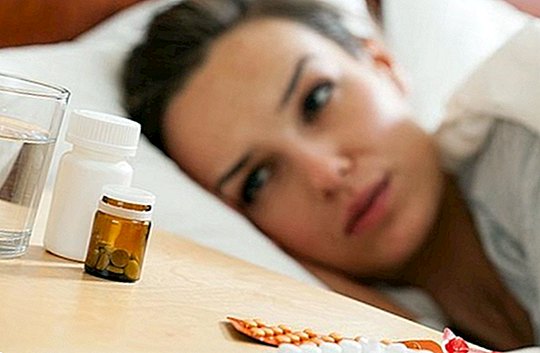The feared earthworms in children: contagion, symptoms and treatment
Although medically it is an infection known by the name of oxiuriasis, the truth is that we are facing one of the most common and common intestinal parasitic infections in childhood, which is popularly known by the name of earthworms.

It is estimated that all children, at some point in their childhood stage (especially when they are small), suffer an infection with pinworms or "worms". And, usually, if during the night the little one is uncomfortable and irritable, with discomfort in the area of the anus, it is quite probable that he has them.
The Spanish Pediatric Association itself estimates that pinworm infection tends to affect between 40-50% of children of school age, usually between 5 and 10 years of age. In fact, its infection in children under 2 years old is considered rather rare (although obviously not impossible).
What are worms in children (pinworms)?
If for the head and hair one of the biggest fears for most moms and dads is the presence of nits and lice, the discomfort in the area of the anus, especially at night, causes a new fear among many parents, since it can be an alert of the presence of some uncomfortable visitors: the feared ones "Worms".
The intestinal parasite that most commonly causes this infection are the pinworms known by the name of Enterobius vermicularis, a worm or worm of white color and cylindrical shape, which can reach about 1 centimeter.
This worm lives in the intestines of human beings. After mating occurs, the male dies and is eliminated through the feces. Thus, the pregnant females remain in the intestine, so that during the night they pass through the intestine towards the anus, where they tend to lay their eggs. Then they try to return to the inside of the anus, although they do not always get it (they can be eliminated through the faeces).
By means of a special secretion the eggs adhere to the surrounding skin and to the margins of the anus. Right at this moment is when contagion can restart again.
How are worms spread in children?
Among young children it is very common - and extremely simple and simple - the contagion of earthworms. In most cases, the presence of eggs in the anus causes an annoying and uncomfortable itching.

If the child scratches, eggs may remain on the nails, so that two types of infection can arise: if the child touches toys or utensils of other children, the actual contagion occurs to other children when they are caught and then put in their mouths, and the restart of a new infection in the child who is already suffering from the infestation, when he puts his hands to his mouth.
Therefore, maintaining proper hygiene is essential to avoid the spread of worms among the smallest, always trying to wash the child's hands, especially if there is evidence that in nursery or school there are more cases of worm infestation or pinworms
What are the symptoms of worms in children?
Although from the moment in which the contagion occurs, until finally the infestation occurs and the typical symptoms of earthworms arise in the smallest, it may take between one to two months, when they appear are more than obvious: there is an annoying and uncomfortable itching in the area of the anus, and even in the genitals.
Anal itching and irritability are two of the symptoms that can alert parents to the presence of intestinal worms.
This can cause irritability and discomfort in the child. Since the laying of the eggs by the pinworms in the anus occurs during the night, it is very common for these symptoms arise during the night, being very habitual that the small one wakes up uncomfortable, and has an uneasy sleep.
It is possible that the itch extends to the genital area, especially in girls, as they can be injured with nails and small wounds can occur, which can lead to superinfection and reach the vagina or urethra. For this reason it is very important to ensure that there is no irritation and discomfort when urinating, itching or flow.

I think my son has worms ... what do I do?
If the first symptoms or discomfort alert you to the possibility that your child may have been infected with worms, it is time to check the perianal area of the small. For this it is essential to have good lighting, and carefully separate the buttocks to be able to observe well the area of the anus.
It is quite possible that you observe some worm of a certain size - they can reach between 0.5 to 1 centimeter in length - that tries to return to the inner area of the anus. And how are these worms? You will distinguish them as small white threads, very thin that move. It is also possible to find worms in the stool of the child.
Warm water can help soothe discomfort and anal itching in the child. Until we wait to administer the appropriate treatment after advice from the pediatrician.
From this moment keep calm. If this is the first time it happens to you, it is quite likely that you will not have effective medical treatment at home to treat the worms. If this is the case and you do not have a pharmacy nearby, be patient and try to calm the discomfort of the little Soaking the affected area in the bidet with a little warm water.
Then, the next day, if you go to the pediatrician's office, he will advise you a medication that administered orally helps kill the adult worms after the first dose is administered. But beware, no medication is at the moment effective to also eliminate the eggs. For this reason it is advisable to repeat a new take 15 days later, which is the time it takes the eggs to hatch.
Effectively, It is recommended that the treatment be followed by both the affected child and the whole family.
It is essential that the treatment be repeated 15 days later, both in the child and in the rest of the family, to eliminate the worms that were born after the hatching of the eggs.
One of the best known medical treatments is the Lomper, which consists of a medicine with Mebendazol especially indicated for the treatment of intestinal parasitosis, especially in the case of Oxiuriasis (Enterobiasis), Anquilostomiasis, Trichuriasis, Ascaridiasis and Necatoriasis.
In young children, the most common option is Lomper 20 mg / ml, administering a 5 ml teaspoon. of suspension in a single dose of 100 mg. And then it is advisable to repeat the treatment after 2 and 4 weeks.
In moms and dads and in the rest of the family it is likely that the pediatrician advises you to choose Lomper 100 mg. in tablets, with the taking of a single tablet, and then repeat the treatment after 2 and 4 weeks. But this dose is only adequate in case of infestation by Oxiuriasis, the most common infection of worms in children. This article is published for informational purposes only. You can not and should not replace the consultation with a Pediatrician. We advise you to consult your trusted pediatrician.


